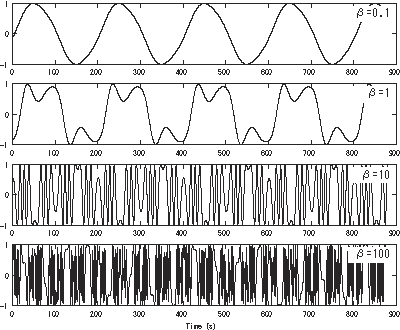FM synthesis
In audio and music, frequency modulation synthesis (or FM synthesis) is a form of audio synthesis where the timbre of a simple waveform (such as a square, triangle, or sawtooth) is changed by modulating its frequency with a modulator frequency that is also in the audio range, resulting in a more complex waveform and a different-sounding tone that can also be described as "gritty" if it is a thick and dark timbre. The frequency of an oscillator is altered or distorted, "in accordance with the amplitude of a modulating signal." (Dodge & Jerse 1997, p. 115)
FM synthesis can create both harmonic and inharmonic sounds. For synthesizing harmonic sounds, the modulating signal must have a harmonic relationship to the original carrier signal. As the amount of frequency modulation increases, the sound grows progressively more complex. Through the use of modulators with frequencies that are non-integer multiples of the carrier signal (i.e. non-harmonic), atonal and tonal bell-like and percussive sounds can easily be created.
FM synthesis using analog oscillators may result in pitch instability. However, FM synthesis can also be implemented digitally, the latter proving to be more 'reliable' and is currently seen as standard practice. Digital FM synthesis (using the more frequency-stable phase modulation variant) was the basis of several commercial musical instruments beginning as early as 1977. The Synclavier I, manufactured by New England Digital Corporation beginning in 1977, included a 32-voice digital FM synthesizer. Yamaha's groundbreaking DX7 brought FM to the forefront of synthesis in the mid-1980s.
...
Wikipedia


